Equity starts with finding the barriers that exist in your company right now.
Equity, diversity, and inclusion (EDI) are key to making sure every employee is valued. While many tech companies and software solutions are focusing on hiring and representation in the EDI realm, employees’ experiences in the job affect their likelihood of staying and recommending your company to others. Today, we’ll explore how to calculate promotion rates, why they might differ across gender and racial groups, and how to use these metrics to make fairer and more accurate promotion decisions.
How do we calculate these promotion rates?
Overall, we want to know how many people were promoted in gender and racial groups. For this, we need to know the Employee Movement Rate. This rate reflects employees’ chances of career progression in your organization. Movement rates can shed light on your company’s leadership development, inclusion, skill building, and other talent practices.
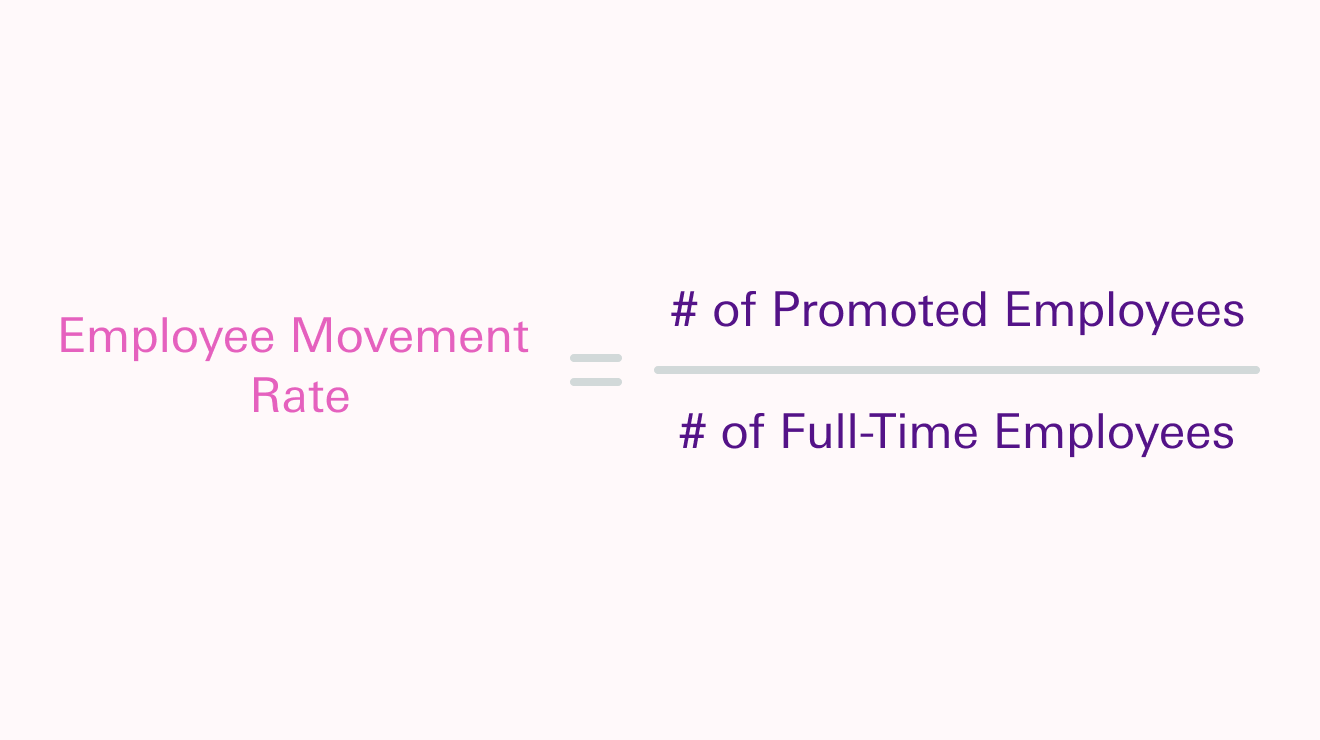
To find the number of promoted employees you have, your people data must have levels or grades. If not, promotions in one department could mean something very different from promotions in another department. Consider using a standardized grade or level system to make your employee movement rate more accurate.
Of course, our overall Employee Movement Rate isn’t enough. We need to break this out for men, women, and nonbinary employees to see how gender affects promotions. To see the impact of race on your employee movement rate, you can compare promotion percentages across racial groups, like in this example bar chart below.
Employees can have multiple racial backgrounds; make sure the questions you ask about race allow employees to select more than one option or to choose “multiracial”. When you report these data, remember that groups of five or fewer employees will make your data more easily identifiable and less consistent (because percentages will vary widely for small groups). If you can, report only groups with more than five employees to preserve data anonymity.
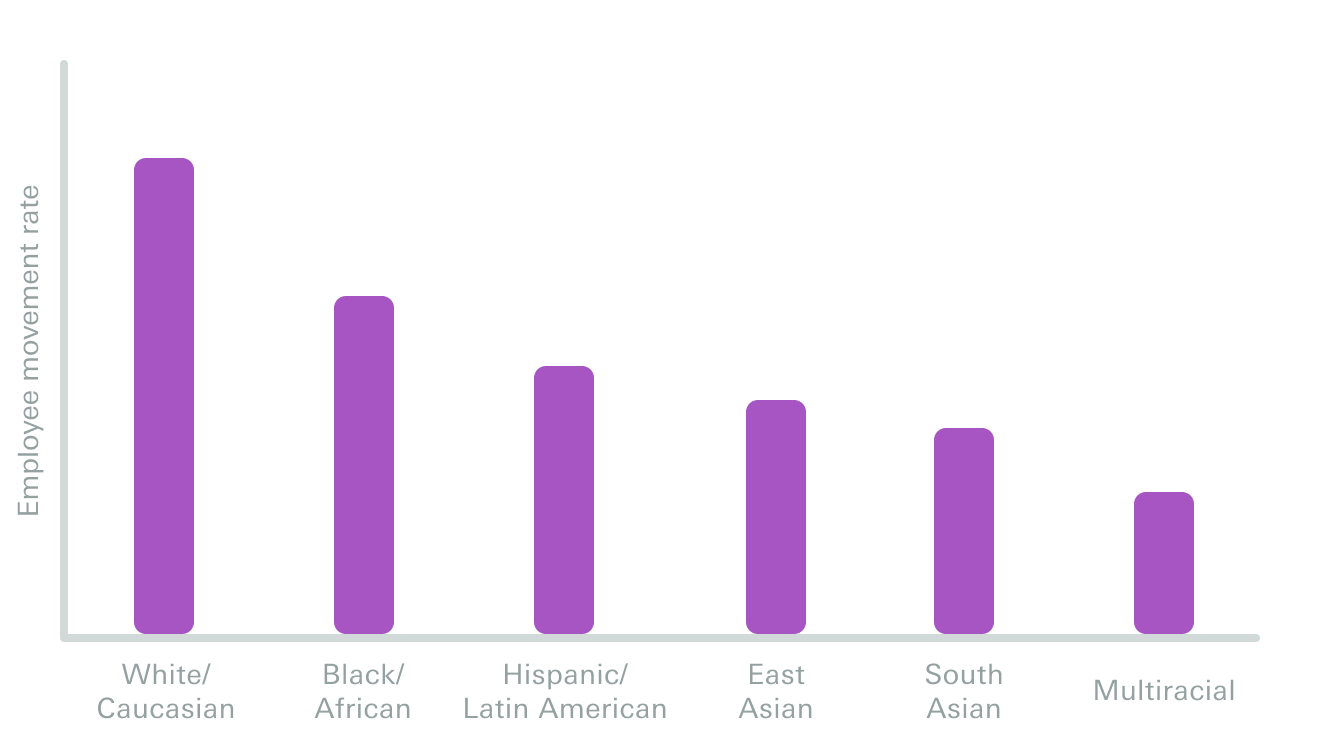
The number of promotions clearly matters here, but so does the time to promotion. For that, we can calculate a metric that sounds like it comes from a physics lab: Position Change Velocity. Simply, this metric tells us how long employees spend in their role on average before getting promoted. To calculate this, we can look at the employees from the formula above who were promoted, and calculate the average time promoted employees were in their previous role for.
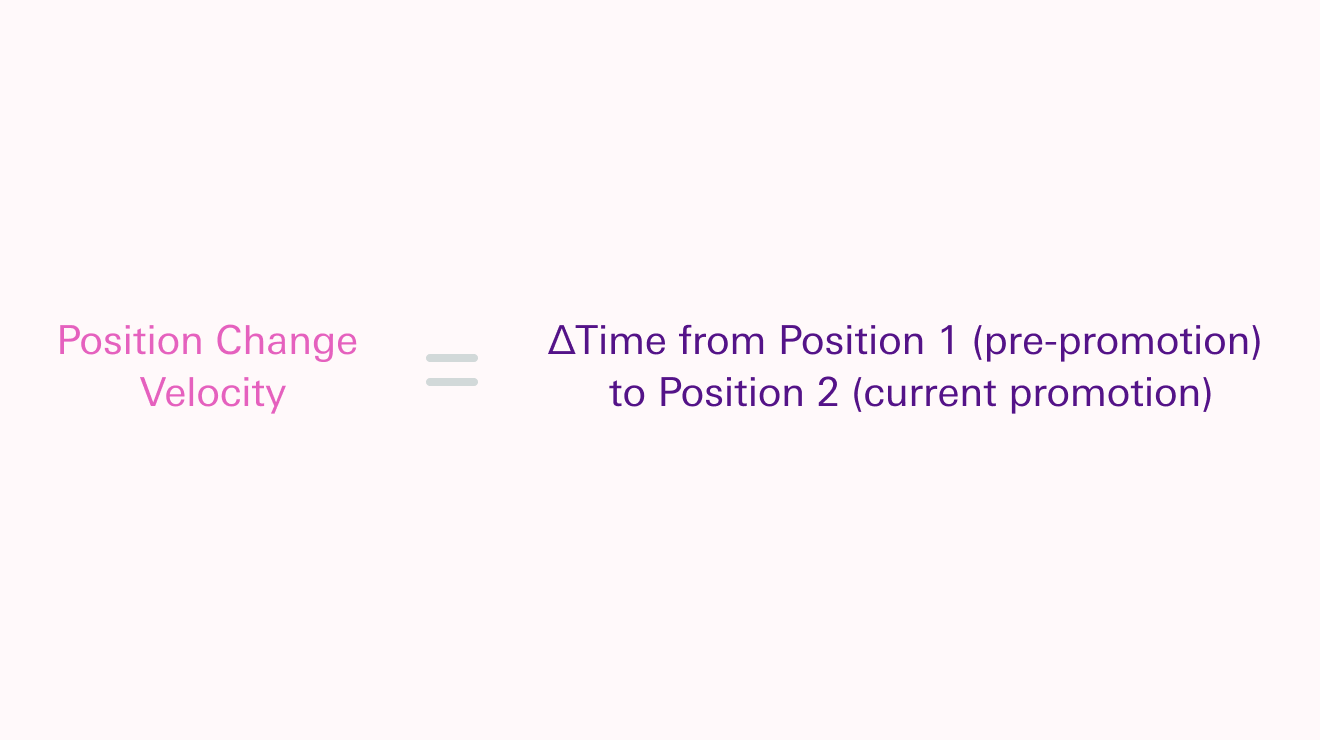
By tracking the time to promotion over multiple years and employee groups, some interesting patterns might emerge. As in the line graph below, you can explore whether position change velocity is getting faster (or slower) over time or whether the time frame is converging (or diverging) across demographic traits like age or gender.
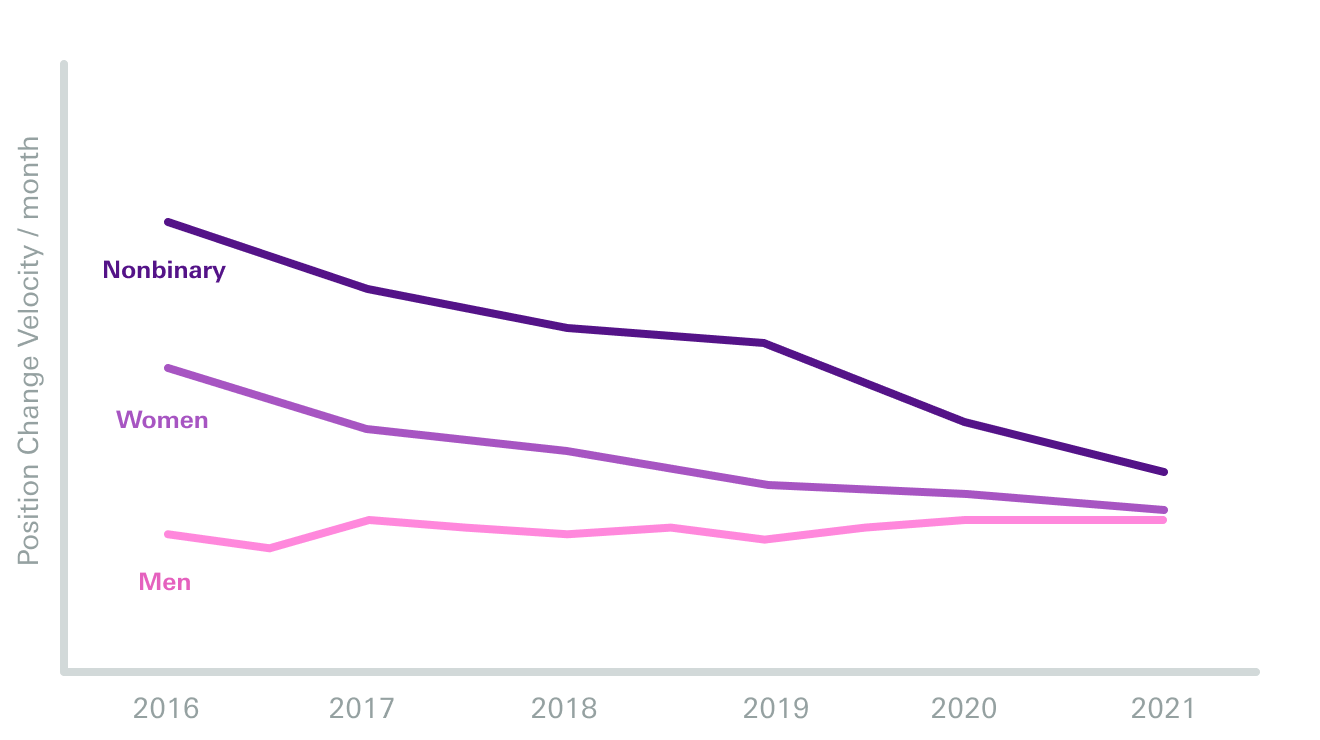
Turn insights into fair promotion for all
Once you have the proportion of each employee group being promoted and the average time to promotion for them, the real work starts.
Investigating these differences, if there are significant gaps between genders or racial groups, involves taking a closer look at your leadership development, promotion, mentorship/sponsorship, retention, and feedback practices.
This means going beyond a policy review: there may be a gap between your intentions, or what is written down, and your actions as a company, or how different employees are actually treated.
If one group is repeatedly passed over for promotions, the skilled employees in that group are hearing a loud signal that their efforts aren’t valued in the same way as others’ are.
These longer promotion cycles can lower retention, employee engagement, and possibly well-being for workers who are passed over. Previously, we covered how fairness is key to preventing burnout. Constantly monitoring the fairness of your performance evaluation and promotion system can avoid burnout in previously excluded groups of employees.
How do I answer this question in Orgnostic?
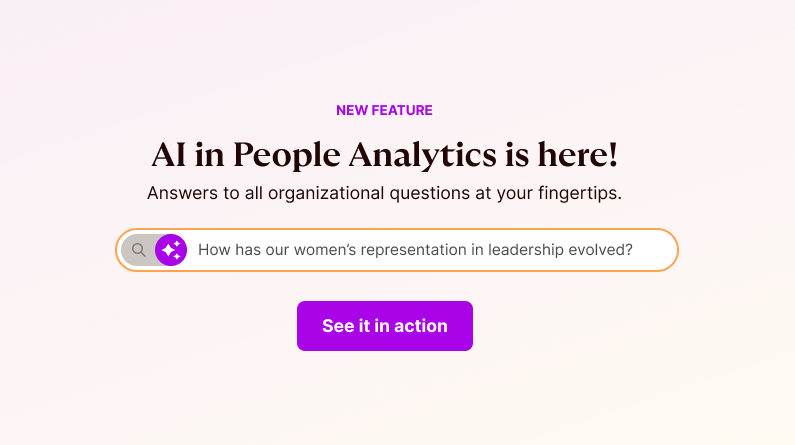
Your employee movement rates and position change velocity can be found in Orgnostic, using data from your HR information system.
To get the most out of these metrics, ensure your employee demographic data are up to date, transparent, and comprehensive.
That means making sure you have gender options for non-binary folks, bi- and multi-racial options when asking about race or ethnicity, and explanations for why you’re collecting these data and how you’ll be using it.